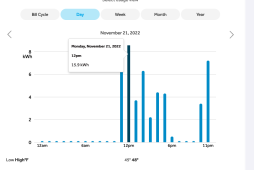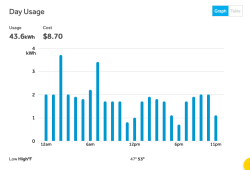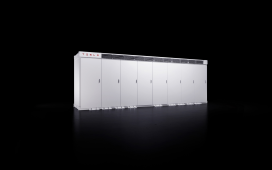Patel
New Member
- Joined
- Oct 6, 2022
- Messages
- 30
Hi everyone,
I am new here. I have a few questions maybe someone can help me answer.
My peak loads which I want to be able to run are 20-25kw, and average loads around 5kw, We recently turned on the heater, and we learned that when the house is very cold, and the heater turns on for the first time. It consumes a peak kwh of 15.9. We want to factor in other things too, so let's say we want to have a peak load of 25kw.
The equipment I currently have, but not set up yet:
Sol-Ark 15k Hybrid Inverter
(2) 15kwh bigbattery kong elite
My question is, the bigbattery have a continuous discharge rate of 175 amps, at 48v that means it can run loads up to 8400 watts.
We want the entire home to run from solar + battery only.
If we run the bigbattery in parallel, would this increase the continuous discharge rate to 16800 watts?
I would be very grateful for someone to give me some tips here or any comments. I have attached a energy usage from the grid which we are currently using now. The spike was from the heater turning on for the first time when the home was 40 degrees.
If anyone here offers consulting services to do a materials list of what I need, I would like to do that.
I am new here. I have a few questions maybe someone can help me answer.
My peak loads which I want to be able to run are 20-25kw, and average loads around 5kw, We recently turned on the heater, and we learned that when the house is very cold, and the heater turns on for the first time. It consumes a peak kwh of 15.9. We want to factor in other things too, so let's say we want to have a peak load of 25kw.
The equipment I currently have, but not set up yet:
Sol-Ark 15k Hybrid Inverter
(2) 15kwh bigbattery kong elite
My question is, the bigbattery have a continuous discharge rate of 175 amps, at 48v that means it can run loads up to 8400 watts.
We want the entire home to run from solar + battery only.
If we run the bigbattery in parallel, would this increase the continuous discharge rate to 16800 watts?
I would be very grateful for someone to give me some tips here or any comments. I have attached a energy usage from the grid which we are currently using now. The spike was from the heater turning on for the first time when the home was 40 degrees.
If anyone here offers consulting services to do a materials list of what I need, I would like to do that.
Attachments
Last edited:





